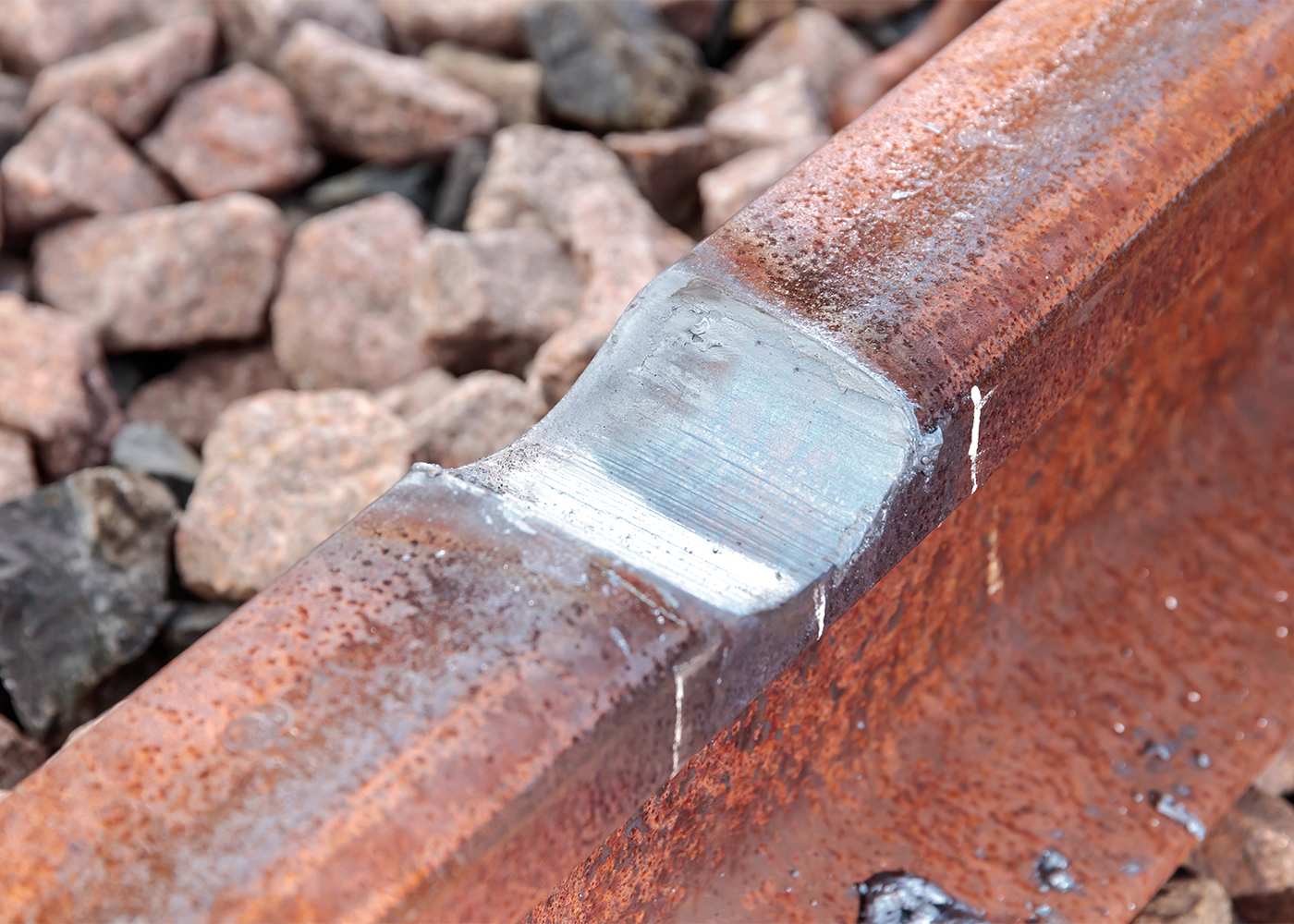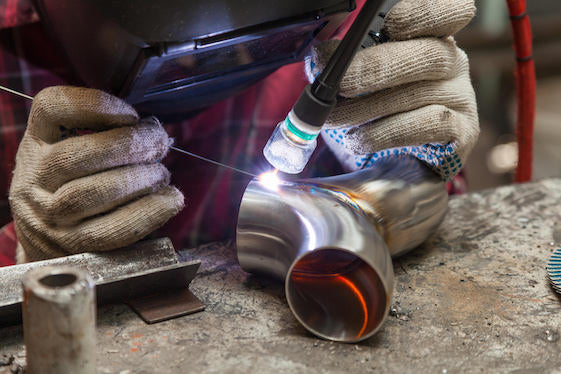All Regarding Welding: Key Insights Into Techniques and Finest Practices for Success
Welding incorporates a range of techniques, each matched for particular products and applications. Understanding these methods, such as GMAW, SMAW, and TIG, is crucial for attaining suitable outcomes. Moreover, the appropriate equipment and security practices can not be ignored. As prep work and repairing play critical roles in the welding process, grasping these elements can substantially boost the top quality of the end product. What are the key variables that ensure an effective weld?
Understanding Various Welding Methods
Welding methods encompass a range of methods, each suited to specific applications and materials. Among one of the most common strategies are Gas Metal Arc Welding (GMAW), Protected Metal Arc Welding (SMAW), and Tungsten Inert Gas Welding (TIG) GMAW, also called MIG welding, is popular for its speed and versatility, making it excellent for thin products. SMAW, or stick welding, is preferred for its simplicity and performance in outdoor environments, particularly with thicker steels. TIG welding offers accuracy and control, making it appropriate for detailed work and non-ferrous steels (Welding). Each strategy has its unique benefits and considerations, allowing welders to pick the very best approach based upon the job's demands, material type, and wanted results. Recognizing these methods is crucial for effective welding
Crucial Welding Equipment and Tools
While numerous welding techniques require certain skills, the best tools and devices are equally important for achieving high quality outcomes. Important welding equipment consists of welding equipments, which differ depending on the method-- such as MIG, TIG, or stick welding. Safety gear, including gloves, aprons, and helmets, warranties safety and comfort throughout the procedure. In addition, fixtures and clamps help protect materials in area, making sure accuracy in welds. Consumables like welding rods, cord, and protecting gas are additionally vital elements that influence the quality of the weld. Tools such as cutters and grinders help with surface preparation and post-weld ending up, adding to an expert outcome. Spending in high-quality tools eventually improves the efficiency and performance of welding tasks.
Safety And Security Practices in Welding
Appropriate security methods are essential in the welding market to secure employees from possible risks. Welders have to wear suitable individual protective tools (PPE), consisting of safety helmets with correct shading, gloves, and flame-resistant clothes. Ample air flow is important to reduce exposure to unsafe fumes and gases created during the welding process. In addition, employees ought to be learnt the right handling of welding tools to prevent crashes. Fire security measures, such as maintaining flammable materials away from the welding area and having fire extinguishers easily offered, are necessary. Normal inspections of equipment and offices can help identify prospective risks before they bring about mishaps. By adhering to these safety and security methods, welders can develop a safer working setting and reduce dangers related to their trade.
Preparing Products for Welding
Preparing materials for welding is an essential step that considerably affects the high quality and honesty of the final product (Belgrade). Correct preparation entails cleaning the surfaces to get rid of impurities such as oil, rust, and dust, which can jeopardize the weld. Methods such as grinding, fining sand, or making use of solvents are commonly utilized to achieve a clean surface area. Furthermore, ensuring that the products fit together comfortably is vital; gaps can bring about weak welds. It's likewise important to think about the alignment and positioning of the elements, as this will affect the simplicity of welding and the last end result. Picking the proper filler material and guaranteeing compatibility with the base steels is important for accomplishing strong, sturdy welds.
Tips for Getting High-Quality Welds
Attaining top notch welds needs attention to information and adherence to best practices throughout the welding procedure. Appropriate joint preparation is crucial, making sure surface areas are clean and cost-free from pollutants. Choosing the suitable filler product and welding strategy based on the base metals is essential for suitable bonding. Keeping constant travel speed and angle while welding can advertise and avoid problems uniformity. Additionally, regulating warmth input is crucial; too much heat can cause warping and compromised joints. Regularly examining the welds during the process permits for prompt changes if necessary. Lastly, employing suitable post-weld therapies, such as cleaning and stress and anxiety alleviation, can enhance the toughness and stability of the weld, ultimately guaranteeing a successful result.
Troubleshooting Usual Welding Issues
Welding frequently provides challenges that can impact the quality and integrity of the final item. Usual concerns such as porosity, inconsistent weld beads, and overheating can occur, each needing specific troubleshooting methods. Recognizing these problems is important for welders to enhance their abilities and accomplish suitable results.
Porosity Problems Discussed
Although porosity can commonly be overlooked, it continues to be an important issue in welding that can jeopardize the honesty of a completed item. Porosity describes the visibility of tiny gas pockets within the weld bead, which can lead and damage the joint to early failure. This issue commonly develops from impurities, dampness, or improper securing gas protection during the welding procedure. To mitigate porosity, welders must verify that the base products are tidy and dry, use ideal protecting gases, and keep constant welding criteria. Frequently examining the devices and environment can additionally assist identify potential concerns prior to they manifest in the weld. Dealing with porosity successfully is crucial for accomplishing solid, resilient welds that satisfy high quality criteria.

Irregular Weld Beans
Inconsistent weld beads can considerably affect the Montana Mobile Welding and Repair Fabrication top quality and strength of a completed product. Different variables add to this problem, consisting of incorrect traveling speed, incorrect amperage setups, and irregular electrode angles. When the welder moves too quickly, a grain might show up narrow and do not have infiltration, while moving as well slowly can create too much buildup. Additionally, making use of the wrong amperage can lead to either undercutting or extreme spatter, both of which concession weld integrity. The welder's method, such as inconsistent lantern activity, can also result in irregular grain appearance. To minimize these problems, welders ought to focus on preserving consistent, regulated motions and making sure proper equipment settings to achieve harmony in their welds. Consistency is crucial to achieving reputable and strong welds.
Overheating and Bending Issues
Excessive heat throughout the welding process can bring about significant overheating and buckling issues, impacting the structural honesty of the workpiece. These problems commonly show up as distortion, which can jeopardize alignment and fit-up, making additional setting up challenging. Elements adding to overheating include the option of welding criteria, such as voltage and travel speed, in addition to the kind of material being welded. To alleviate these concerns, welders must preserve constant traveling speed and ideal warm input while keeping an eye on the work surface temperature. Furthermore, preheating or post-weld warmth therapy can help relieve anxieties brought on by rapid air conditioning - Montana Mobile Welding and Repair Belgrade. Regular inspection and adherence to ideal methods are vital in preventing getting too hot and ensuring the durability and integrity of bonded structures
Frequently Asked Concerns
What Are the Career Opportunities in the Welding Industry?
The welding sector supplies diverse occupation possibilities, consisting of settings as welders, instructors, inspectors, and engineers. Experts can operate in production, construction, aerospace, and automotive fields, benefiting from strong demand and affordable wages in various duties.
Exactly How Can I Boost My Welding Rate Without Giving Up Quality?
To boost welding speed without compromising quality, one must practice efficient strategies, maintain devices, enhance setups, and enhance hand-eye coordination. Routine training and looking for responses can additionally significantly contribute to achieving quicker, top quality welds.
What Qualifications Are Available for Welders?
Numerous accreditations exist for welders, including those from the American Welding Culture (AWS), the National Facility for Construction Education And Learning and Study (NCCER), and numerous industry-specific companies. These qualifications enhance employability and demonstrate skill proficiency.
Exactly How Does Welding Affect the Qualities of Metals?
Welding affects the residential properties of metals by modifying their microstructure, which can lead to changes in ductility, solidity, and stamina. Heat input and air conditioning prices during the procedure considerably affect these material characteristics.
Can I Weld Dissimilar Metals With Each Other?
